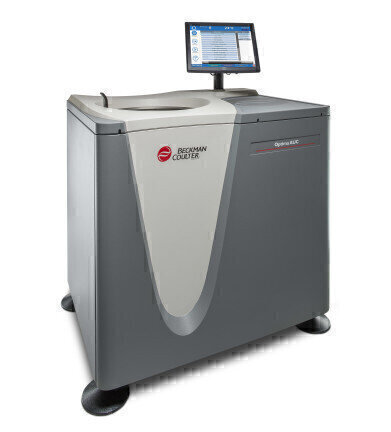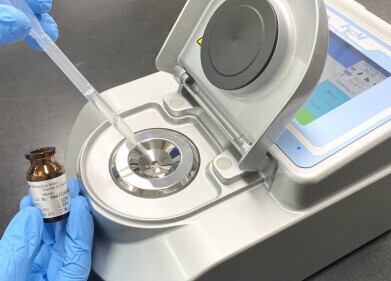Laboratory Products
Next Generation Analytical Ultracentrifuge Unveiled
Aug 17 2016
Beckman Coulter Life Sciences has introduced the Optima AUC, a next generation analytical ultracentrifuge with many enhanced capabilities creating
a fast, sophisticated and easy-to use analytical research tool. The optics are contained outside the rotor chamber, making it easier to clean, and reducing the impact of the g-force on the optics.
The 38.1 cm (15 inch diagonal), touch-screen display eases operation and boosts efficiency. In addition, modern, intuitive software enables simple run-monitoring and data exports performed either locally or remotely
Product Manager Chad Schwartz PhD explained: “The new Optima AUC returns analytical ultracentrifugation to the forefront of solution-state protein and particle analysis for accurate molecular weight determination, thermodynamics of associating systems, viral and nanoparticle payload characterisation, and many additional emerging applications.”
Although analytical ultracentrifugation is a recognised technique for protein characterisation, researchers have realised the technology’s value for characterising a wide array of particles including peptides, polymers, metallic nanoparticles, liposomes and other non-biological materials. The Optima AUC allows molecules to float free and unbound so that researchers are able to characterise them in their native state.
This powerful technology determines molecular weight, size, shape, and polydispersity, and is capable of interactions between particles in a native, matrix-free environment. The new Optima AUC now allows multi-wavelength analysis.
“Rapid data acquisition coupled with reproducible and precise wavelength selections enable applications never before possible with AUC,” said Dr Schwartz. Wavelength-specific monitoring now allows researchers to study complex systems easily and in a single experiment.”
Dr Borries Demeler, University Texas Health Science Center, USA, singled out the following key technical innovations: new Rayleigh interference system for higher resolution for more precise measurements, higher data density and higher confidence in the results; state of the art UV-visible absorption optics to provide reproducible wavelength selections, fast radial scanning for reduced temporal distortion, and sensitive detection in the far UV.
Commenting on their importance, he stressed: “For the first time, these advanced features enable revolutionary new multi-wavelength experiments, an entirely new class of experimental designs that can exploit the presence of multiple chromophores in complex mixtures through spectral decomposition.
The Optima AUC improves temperature control and increases data storage, wavelength precision, and wavelength repeatability, providing researchers the confidence needed for clean, reproducible data. Additionally, the instrument’s modular design allows for the development of new detection systems, opening up the possibility for unique detection capabilities.
Digital Edition
Lab Asia 31.2 April 2024
April 2024
In This Edition Chromatography Articles - Approaches to troubleshooting an SPE method for the analysis of oligonucleotides (pt i) - High-precision liquid flow processes demand full fluidic c...
View all digital editions
Events
May 05 2024 Seville, Spain
InformEx Zone at CPhl North America
May 07 2024 Pennsylvania, PA, USA
May 14 2024 Oklahoma City, OK, USA
May 15 2024 Birmingham, UK
May 21 2024 Lagos, Nigeria











.jpg)






